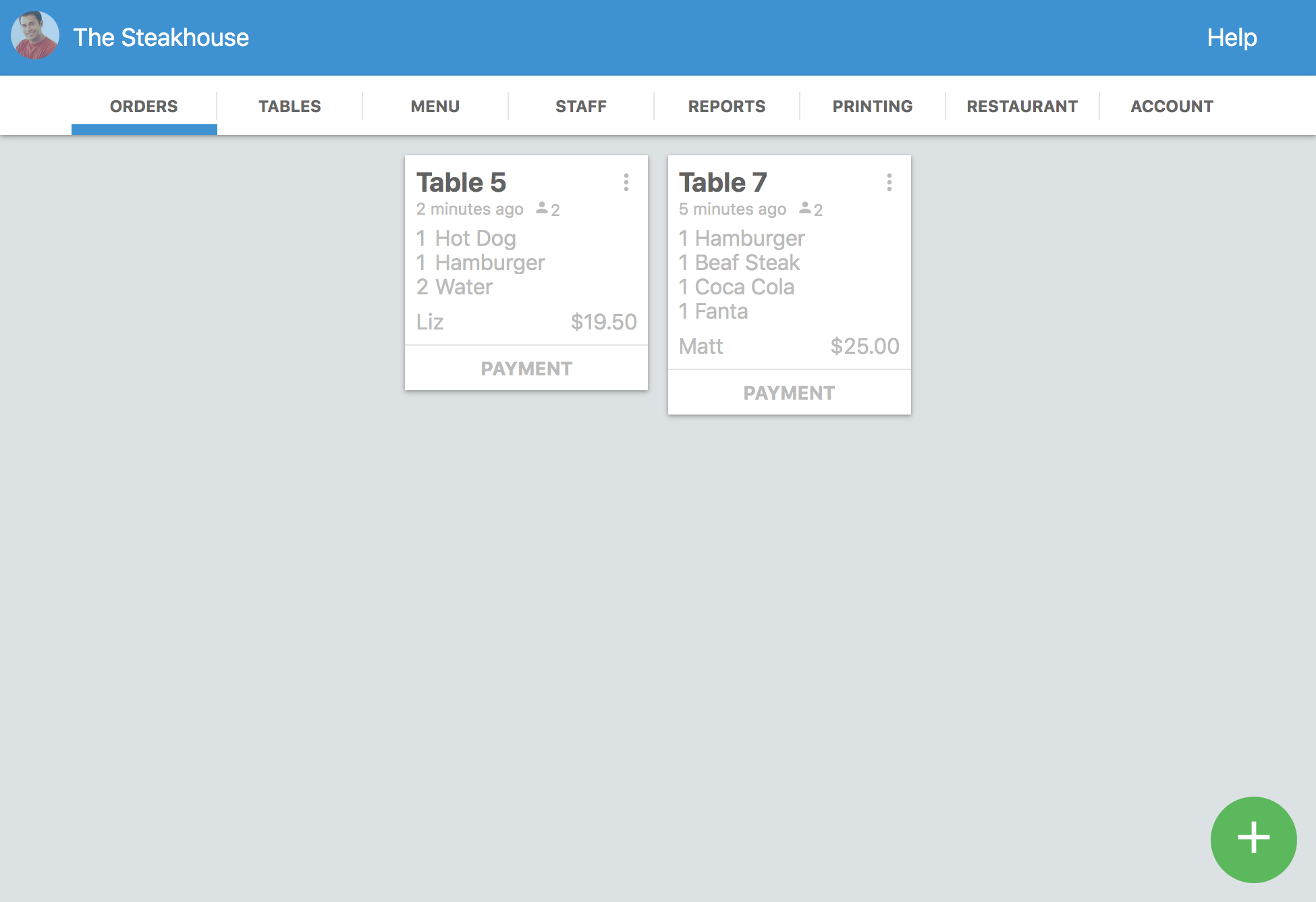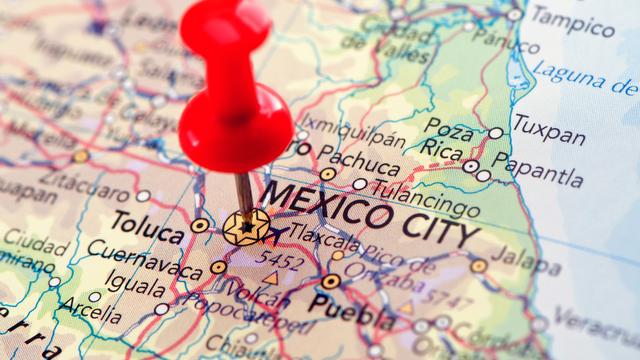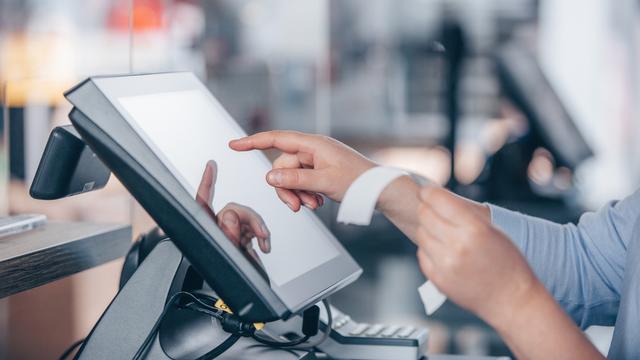The articles and free resources available on our website, blog, YouTube page, and other social media have led to this article—the ultimate guide to opening a small restaurant. Opening a restaurant, regardless of its size, is a daunting venture that not everyone is willing to pursue. But fear not, because I will cover everything you need to know and then some in this ultimate guide. Here’s what I’ll cover:
- All the steps you must follow when opening a restaurant
- The numerous aspects you must pay attention to when starting a food business
- The most common challenges you’ll face and their respective solutions
- Numerous resources we’ve created over the years for different restaurant management areas
Finally, I’ll keep it simple while sharing realistic tips to help you in your specific situation. Starting a restaurant is a climb full of different challenges you must overcome, only to discover that keeping a restaurant running is a Sisyphean task. But one must imagine Sisyphus happy. If you want to be a proud small business owner, this guide will point you in the right direction. Let’s begin!
Defining a ‘Small Restaurant’
Let’s put a face on our target first. The definition of a "small restaurant" can vary based on context and who you ask. However, some general characteristics are often used to categorize eateries within this size range:
- Small restaurants typically have 20-50 seats, although some might push upwards to 75 depending on layout and service style. This size allows for a more intimate atmosphere and personalized service compared to larger establishments.
- They often focus on limited menus. This allows for efficient kitchen operations and reduces food waste.
- A small team typically manages kitchen and front-of-house operations, with chefs doubling as servers in some cases. This fosters a close-knit environment and creates opportunities for personal interaction with customers.
- Startup costs for small restaurants tend to be lower than for larger establishments due to less extensive space requirements and equipment needs.
- Location can play a role in defining a small restaurant, too. A 50-seat food business in a bustling city center might be considered "small" compared to a similarly-sized restaurant in a rural area.
Even though there's no single definitive answer to how big a "small restaurant" is, these characteristics can help you figure it out.
How is Opening a Small Restaurant Different from Opening a Medium or Large One?
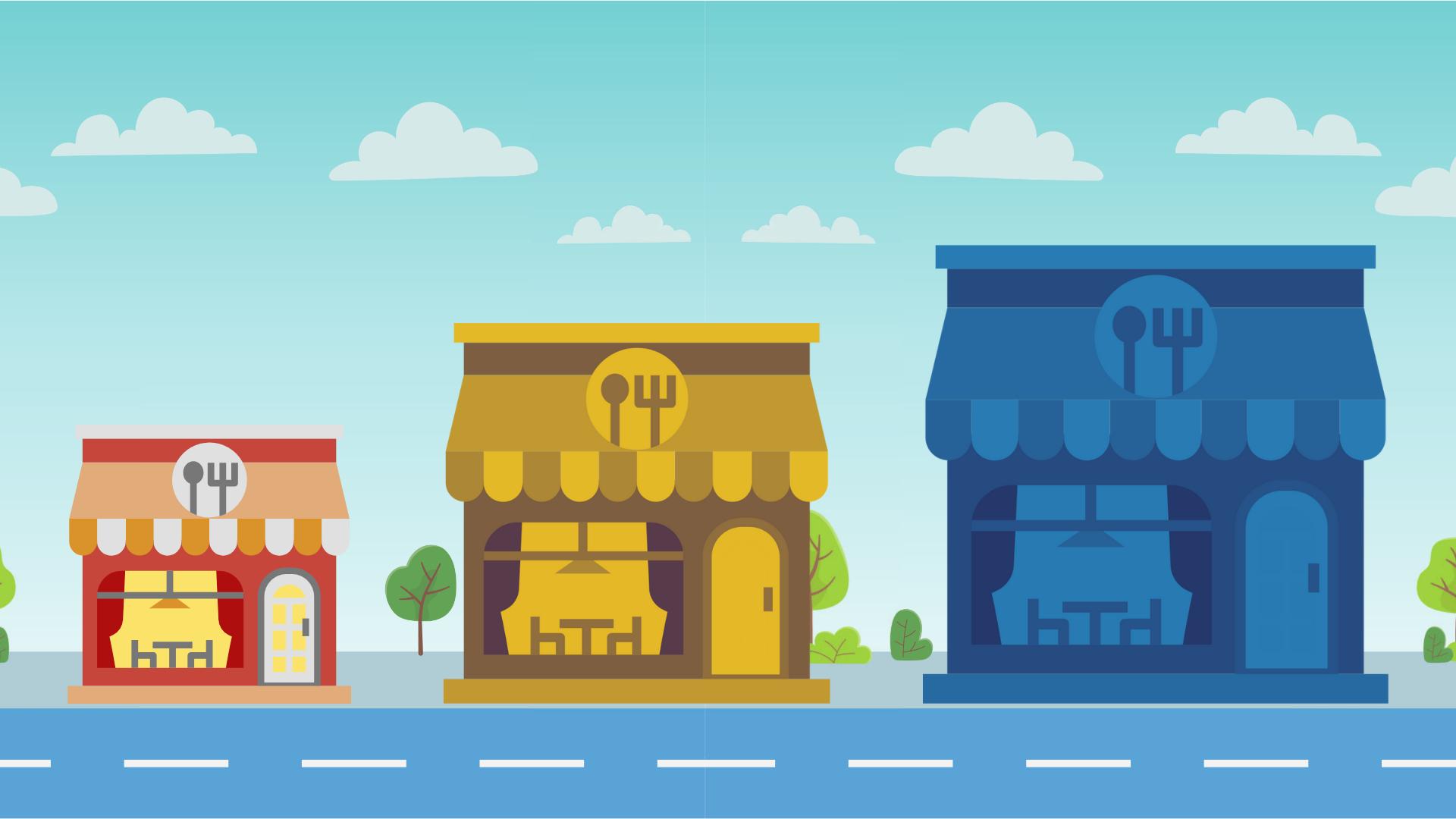
Opening a restaurant, regardless of its size, is a challenging endeavor. However, the size you choose will significantly impact various aspects of the process, presenting both unique challenges and advantages. Here's a breakdown of how opening a small, medium, or large restaurant differs.
Scale and Investment:
- Small: Requires less upfront investment in terms of space, equipment, and staffing. This makes it easier to manage financially and can lead to quicker profitability.
- Medium: Requires more investment than a small restaurant but often offers more flexibility in seating capacity, menu options, and potential revenue streams.
- Large: Demands significant investment in all areas, making it financially riskier but potentially offering higher returns due to increased capacity and scale.
Operations and Management:
- Small: Easier to manage with a lean team due to simpler operations and menu. Owner involvement is often high, offering greater control and adaptability.
- Medium: Requires more structured management and potentially specialized roles as operations scale. Delegation becomes crucial while maintaining focus on quality and customer service.
- Large: Highly complex operation necessitating strong leadership, defined systems, and efficient communication across departments. Delegating effectively and maintaining quality control amidst high volume is critical.
Menu and Ambiance:
- Small: Can focus on a niche concept or limited menu for better execution and cost control. Ambiance tends to be more intimate and personal.
- Medium: Allows for a wider menu with options to cater to diverse preferences. Ambiance can be more versatile, blending functionality with design.
- Large: Often features extensive menus with specialized chefs. Ambiance is carefully planned to accommodate high volume and create a distinct experience.
Marketing and Customer Base:
- Small: Relies heavily on local marketing and building a loyal customer base through personal interaction. Niche focus can attract specific demographics.
- Medium: Utilizes a broader marketing mix, potentially including online presence and events. Customer base is more diverse but still relies on local appeal.
- Large: Employs extensive marketing strategies to reach a wider audience. Brand awareness and reputation become crucial for attracting customers.
Challenges and Opportunities:
- Small: Limited seating capacity, higher vulnerability to economic fluctuations, and potentially lower profit margins. However, it is easier to adapt, experiment, and build a close-knit community.
- Medium: Balancing growth with maintaining quality, potential need for additional investment, and increased competition. Offers potential for expansion and diversification.
- Large: High operational costs, complex management challenges, and potential saturation in larger markets. Provides access to economies of scale, prominent brand presence, and diverse revenue streams.
The ideal size for your restaurant depends on your budget, vision, experience, and market environment—creating a business plan and a market study is necessary to define the idea you have and obtain reliable market data.
All the Steps and Tips to Opening a Restaurant

Opening a restaurant on your own requires a lot of attention to detail. In some cases, it also requires expertise and several hands on deck aside from your own. That’s why, before we get started, I highly recommend you consider hiring the services of a local restaurant advisor or consultant. That way, you can gain more insight into what it takes to open a business in your city specifically, which can be highly useful if it’s difficult due to regulations, permits, and so on. With that said, to the tips!
0. The Entrepreneurial Mindset

This is a tip I wanted to include just because, from my perspective and experience, it can make or break your business before it’s born. When opening a restaurant, you must have an unwavering commitment. That sounds challenging and, at the very least, hard to maintain. If you don’t have experience opening and running a restaurant, I highly recommend you watch the popular series The Bear. Even though the series is dramatized for storytelling, there’s no doubt that the aspect of business management and everything related is as stressful and eventful as portrayed. Plus, life never stops just so you can open your business. That’s why you must master the entrepreneurial mindset. Here are some of the traits you must practice and keep in mind at all times as a future food business owner:
- A burning passion for food and hospitality: this is vital to fueling the long hours, challenges, and risks of building a successful restaurant.
- Vision and ambition: the ability to envision your restaurant's success and the tenacity to make it a reality.
- Strong work ethic: restaurant life is demanding, requiring dedication, perseverance, and the ability to roll up your sleeves and get things done.
- Problem-solving and decision-making skills: the ability to think on your feet, adapt to challenges, and make quick, informed decisions.
- Effective communication: communicating clearly and concisely with staff, customers, and suppliers.
- Delegation and trust: building a restaurant’s staff requires empowering and trusting your staff to carry out their responsibilities.
- Stress management: you must be able to handle pressure, maintain composure, and navigate stressful situations.
- Positive attitude and perseverance: optimism, self-belief, and the resilience to bounce back from setbacks are essential.
Now that’s out of the way, let’s get into the real tips.
1. Define the Restaurant’s Idea

The first order of business is to define the restaurant’s idea, which translates to creating a business plan and its concept. This step can be as complex as you want it to be, although I highly recommend you don’t risk it much if it’s your first business. A tried and tested restaurant concept and a basic business plan can take you a long way. If you have a more risky idea you want to try, you can also open your doors with a simpler version and build upon it. Check out the following articles to learn more:
- The advantages of developing a business plan
- How to create a business plan for your restaurant
- Restaurant concept: importance and how to choose or create one
- Restaurant organizational charts
These articles summarize the best tips we can offer to help you define the idea you want to build into a restaurant. Make sure to check them out and take notes before you move on. A good business on paper is usually a good real-life business—if you stick to the plan, of course.
2. Perform Deep Research to Create a Budget Spreadsheet

This is one of the most concerning details of opening a restaurant—how much it will cost. But before you can worry about it, you must create a list of everything you must invest in to open the business. As painful as that sounds, you must know as many details as you can about the following aspects of the business:
- Local rental costs: research rent prices for suitable locations based on your desired size and target audience.
- Permits and licenses: identify necessary permits and their associated fees.
- Equipment and furniture costs: research prices for kitchen equipment, dining furniture, tableware, and point-of-sale systems.
- Food and beverage cost analysis: estimate food and beverage costs based on your menu and expected customer volume.
- Staffing costs: research average salaries for chefs, servers, and other staff in your area.
- Optional (but highly recommended): consider marketing and advertising costs, such as website development, social media marketing, local promotions, and any planned grand opening expenses.
Make sure to perform thorough research to create an estimate of what you must invest. It’s also a good idea to include a contingency fund to cover unforeseen expenses. You can also break down each cost in a spreadsheet to categorize and prioritize your investments. Keep in mind that this guide is based on opening a small restaurant, so the overall budget shouldn’t surpass USD 500.000 if you’re in the U.S. To achieve that, you must cut costs in every way possible without sacrificing quality. Also, check out our article about the cost of starting a restaurant—there we cover some essential money-saving tips. Here are some other helpful articles that can help you with this step:
- Pennsylvania restaurant permit guide
- Mexico restaurant permit guide
- Restaurant kitchen equipment
- Analyzing restaurant costs
- How to calculate food costs
- Choosing between buying an existing restaurant or starting your own
Those articles can help you better understand and define the initial costs you should include in this step. When you’re done, you should have a highly organized, categorized, and prioritized budget spreadsheet.
Focus on Getting a Great Location
Yes, that old, vexingly complex saying of “location, location, location” is true. If you want to succeed in the industry, you must focus on finding a location that’s as close to perfect as possible. Of course, this will be much easier in some places than others. Some cities are crowded with decades-old family businesses that refuse to die. However, if you look hard enough, you’ll be able to find the hidden gem location that you can envision as the ideal venue for your business.
3. Organize All the Pieces and Obtain Funding

This is one of the hardest aspects of opening a new business, especially considering you need to have a sizeable budget to allocate to different areas of a business that isn’t producing any money yet. But this challenge might be bigger than it appears. Unless you’re in a personal situation that doesn’t allow you much wiggle room, there are numerous options you can explore to obtain funding for your business:
- Bootstrapping: Utilizing your savings and investments can be a good starting point, though it may limit your initial scope.
- Friends and family: Pitching your concept to close circles can offer smaller loans or seed funding with personal connections.
- Small business loans: Banks and credit unions offer loans specifically for small businesses, often requiring a solid credit history and detailed business plans.
- SBA loans: The Small Business Administration (SBA) guarantees loans through lenders, easing access to capital but requiring specific qualifications and paperwork.
- Angel investors: Wealthy individuals invest in promising startups for equity shares, offering mentorship and guidance alongside funds.
- Venture capitalists: firms invest in high-growth businesses with significant potential, aiming for larger returns but expecting greater control and involvement.
- Crowdfunding platforms: platforms like Kickstarter or Indiegogo allow smaller, community-driven fundraising by offering rewards or equity shares.
Those options might be exactly what you need. However, in most cases, it’s a good idea to have a base capital consisting of savings—generating too much debt for a new business is not usually recommended.
Cheaper Alternatives
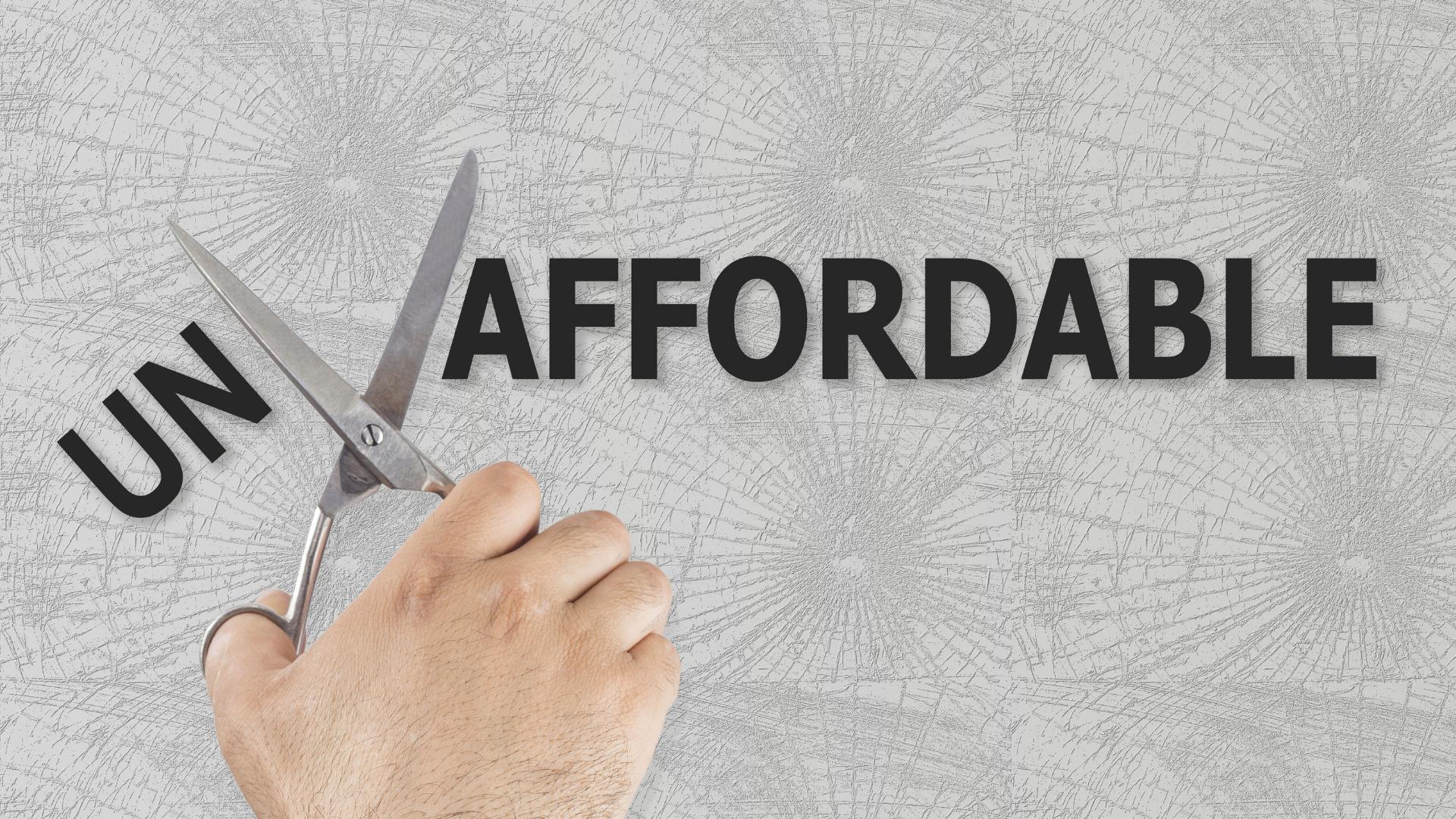
If you read some of the articles I’ve recommended above, then you know about some of the options that can save you some money on startup costs. This is something you must consider, especially for the most expensive equipment, like kitchen equipment, furniture, and renovations, among others. Here’s a quick recap:
- Rent a venue with equipment included.
- Rent kitchen equipment. Lease essential equipment instead of buying outright, conserving upfront costs. Keep in mind that this is more expensive in the long term.
- Go secondhand or refurbished: look for good-quality used equipment or consider rental options instead of buying everything new.
- Get creative with repurposing: upcycle vintage furniture or use everyday items for unique decor elements.
- Prioritize essentials: focus on acquiring the critical equipment needed for your core menu items and gradually add to your inventory as finances allow.
- Utilize technology: leverage free or low-cost online tools for reservation systems, marketing campaigns, and customer engagement.
- Negotiate with suppliers: compare prices and negotiate deals with vendors for bulk purchases or longer payment terms
- Learn about as many things as you can. For example, learning about free marketing tips you can apply to your restaurant on YouTube is better than no marketing at all. Entrepreneurs must wear many hats!
Even though these tips will prove useful when starting a business, make sure you don’t push it too much so that it lowers the quality of the business or causes short-to-mid-term losses. You won’t be able to save money on some areas of your business—that’s just how it is, and it’s alright.
4. Kickstart the Investments

In this step, you just have to start renting and buying everything you will need to start the restaurant. Of course, this step doesn’t start before you have the budget spreadsheet or investment list. You should also have as many details as you can about the quality of different equipment, comparisons between brands and manufacturers, equipment sizes, and prices, among other things. Below is the order of the purchases you must make:
- Commercial space
- Renovations or repairs
- Permits and licenses
- Essential equipment
- Furniture and decor
- Utilities and insurance
Buying and renting everything you need and performing repairs or renovations in the commercial space can take a while. Also, it’s a good idea to rent or buy the space before getting the equipment, especially for the kitchen. Even if you have measured the space and organized the layout on paper, the equipment might not fit or might not fit as you thought it would. That would require you to start from scratch, taking more time and money. This also applies to other areas of the business.
5. Organize the Kitchen and Other Working Areas
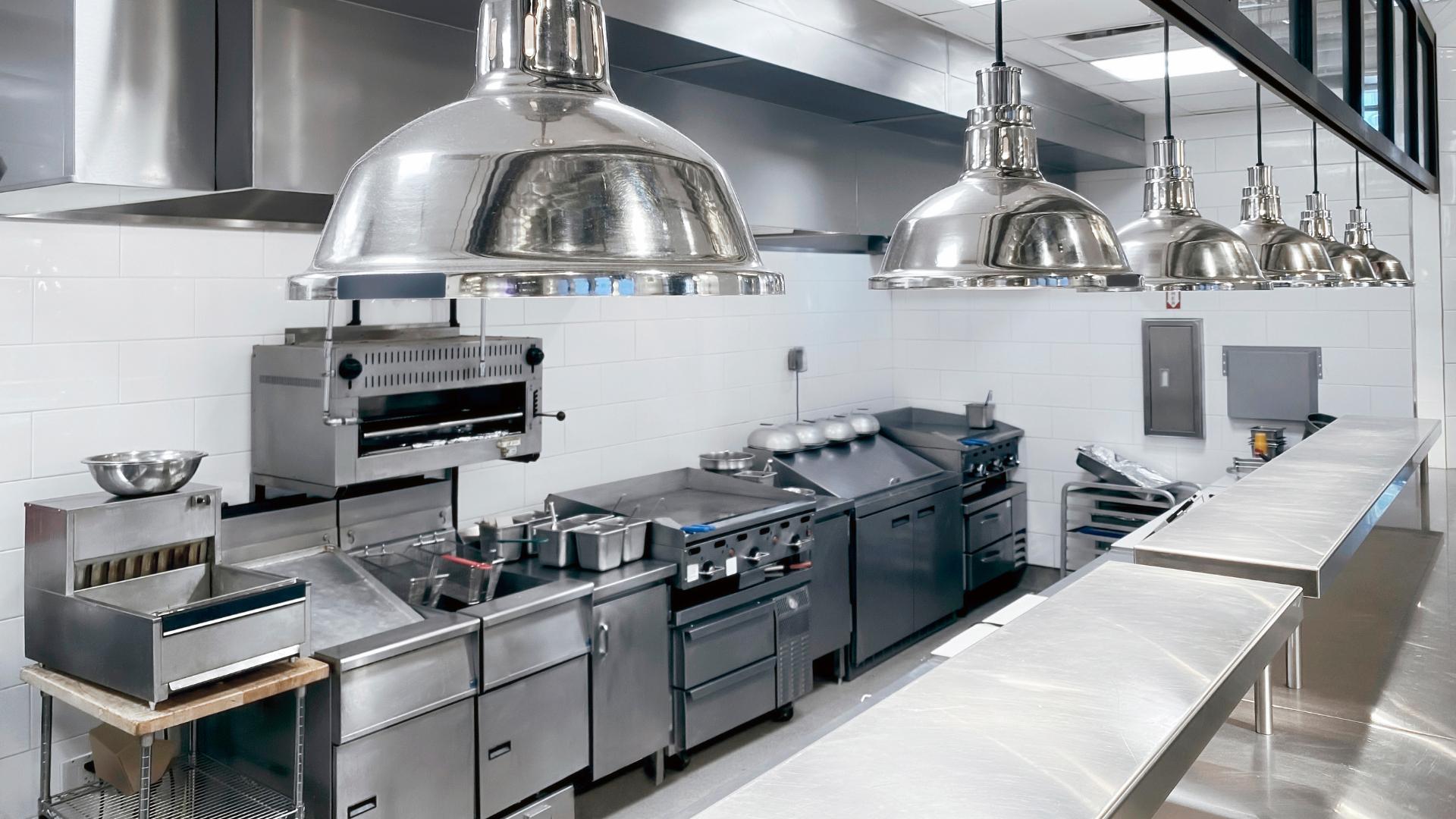
Organizing everything is key when it comes to operating in a small restaurant, especially if the commercial space has an odd distribution or if it’s small. That’s why I mentioned you must gather information about the size of the equipment—you can’t just buy everything and hope it fits magically. Instead, you should measure the space you’ll have to work with. In addition to fitting everything, you must also worry about organization. The layout of the kitchen must be functional and efficient according to the workflow of the restaurant. This can take minutes off of different procedures, which might sound unimportant but can be essential to meeting the order influx during peak hours. It’s much more vital if you’re trying to offer online orders, takeout, or delivery. You must also do the same for other areas of the business if they’re available—administrative areas, bars, tables, seats, and the payment area, among others, should be as organized as possible. Check out the following articles to complement this step with more useful tips:
- Commercial kitchen layouts and areas of a restaurant
- How to design a restaurant floor plan
- Choosing the best point of sale system for your business
- Small restaurant design and decoration
This step is vital to ensuring the comfort of your staff while working, but it will also define the design and environment your customers will enjoy when you finally open your doors. Take as much as you need, within reason, to optimize every inch of the business! From this point on, the business is almost ready, but for now, it’s a playground of possibilities. If you have some experience in the industry or if you’re an expert at organizing your efforts and focus, you can start applying the following three steps at the same time. It’s also viable if you have some help on the management side of the business.
6. Start Creating a Menu
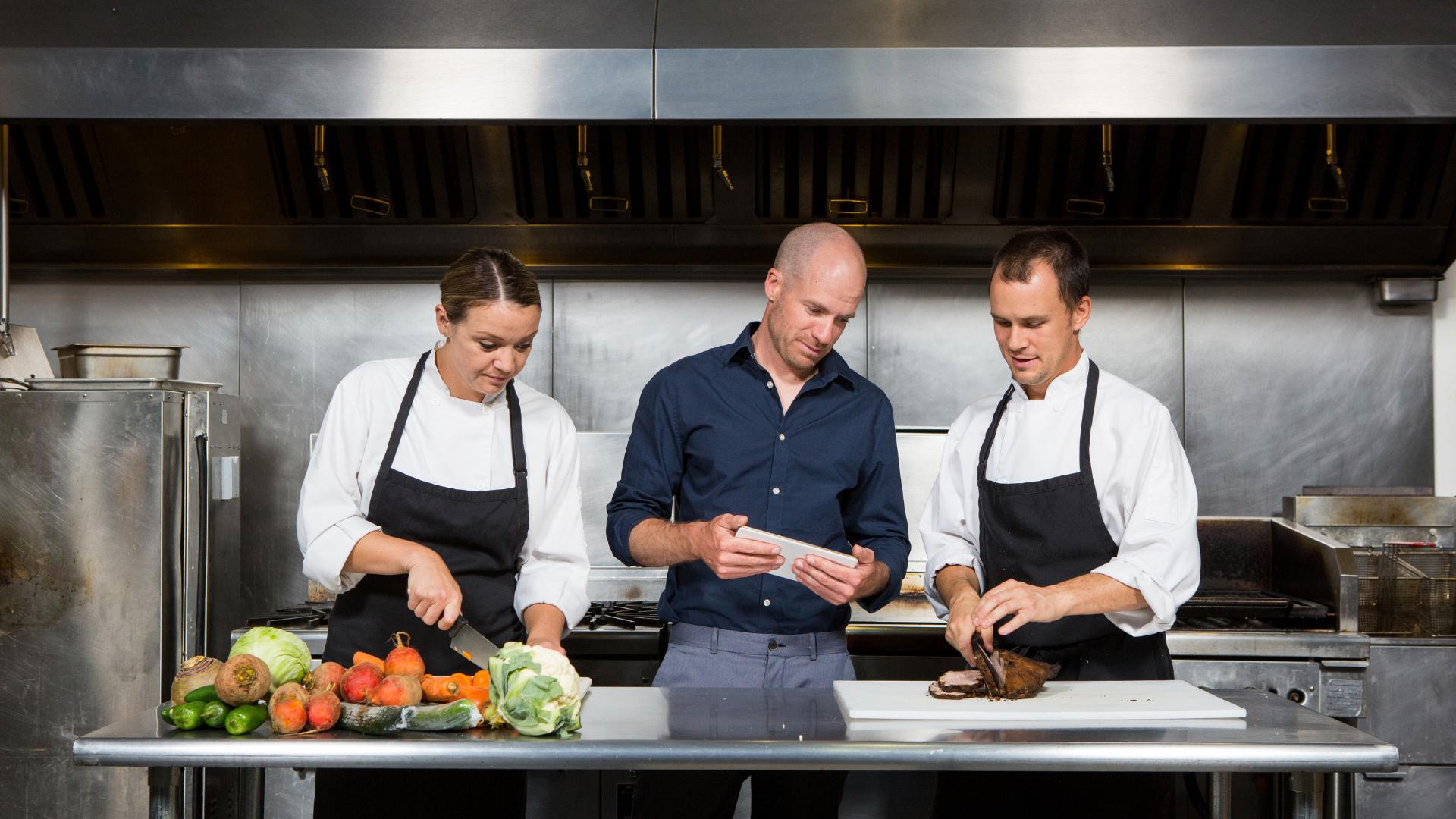
If you’ve created a detailed business plan, you already have something in mind about the menu of your business. At least, you should know the type of food you plan to serve and have the first dish ideas and estimated costs and prices. If you’re a cook, you probably have run some experiments before—it might have started the idea of owning a restaurant! However, now it’s time you nail all of the details and, of course, try out the kitchen for the first time. If you’re not culinary inclined, then you’ll have to start recruiting kitchen staff members as soon as possible to start this process. They can bring in experience that can help you come up with new dish ideas, especially if they have knowledge about the gastronomical offer you want to pursue. This step includes everything related to the creation of the menu, from the creation of the dishes, their ingredients, standardized recipes, preparation times, testing out the layout of the kitchen, and ultimately, the design of the physical menu. You can also take the opportunity to look into point-of-sale systems like Waiterio that allow you to create an online menu for delivery and takeout services. Other features, such as QR code menus, are also good to have nowadays. Again, we have plenty of resources for you to aid you in the creation of your restaurant’s menu:
- Types of restaurant menus
- How to make a menu for your restaurant
- Menu engineering 101
- Restaurant menu design
- How to create a healthy menu for children
Of course, you must have something to cook, which takes us to the next step.
7. Start Building a Relationship with Your Restaurant’s Suppliers

Once your kitchen is open (the kitchen, not the restaurant), you can start reaching out to suppliers—some entrepreneurs even do it earlier, especially if they’re experimenting with menus. This is crucial because they will bring the main product of your business! This is also something that you should include in your restaurant’s business plan. Sourcing the right ingredients at the lowest prices possible while maintaining quality and freshness is essential to a business where the bar of quality is always rising. We have a dedicated guide on how to pick the best suppliers for your restaurant. Check it out to find more useful tips that will guide you through the process of contacting, testing, and maintaining a successful relationship with your suppliers.
8. Start Thinking About Your Staff

Up to this point, you probably don’t have any staff aside from yourself and people who might be helping you out with moving things, organizing the space, and so on. But your restaurant won’t operate itself—you’ll need to hire cooks, waiters, administrative staff, dishwashers, cleaning staff, and more. This depends a lot on the organizational chart you pick for your business. Below is an example of a simple organizational chart for a small restaurant.
This organizational chart doesn’t include a lot of staff, and depending on the actual size of your business, it might need more or sometimes fewer employees. Still, hiring the right staff is something that takes time, effort, and a lot of patience. You won’t find the right staff immediately after posting ads! I highly recommend you check out our comprehensive guide on staff management. There, you’ll find all the steps you need to follow to ensure you’re using the best hiring practices for the current state of the restaurant industry. It also has some tips related to management and how to treat your staff properly, how to define and create job descriptions, and more. Check out the following articles to complement this information even more:
You should also look into hiring an accountant if you don’t have a lot of experience in the money management side of business. Once again, I urge you to take your time on this step. Your restaurant’s staff will do most of the heavy lifting—they’ll cook, clean, tend to tables, and much more. The better you are at managing and taking care of your staff, the better they will treat your customers. Still, keep in mind that there’s some overlap between this step and the previous two.
9. Additional Preparations
This step includes some of the things you should keep in mind, but that are somewhat optional to the restaurant business—they’re quality-of-life solutions to ease the management of your restaurant. I list all of the different services and preparations below.
Most essential: A POS System

An excellent point-of-sale system provides you with numerous tools you can use to supercharge the management of your restaurant. Some of the most important are:
- Advanced sales reporting
- Order management
- Table management and layout
- Online menus and storefronts
- Different payment methods
- Staff management
Waiterio offers all of these features and more!
- You can use numerous affordable third-party hardware solutions.
- It’s also compatible with different devices and operating systems. You can pick the one that works best for your business, including the best-value-for-your-money hardware.
- The compatible hardware options include KDS, receipt printers, card readers, and mobile and desktop devices from different brands.
And the best part is that Waiterio has all the features you need for your restaurant at no additional cost. Check out our article about the top 6 affordable Square POS alternatives to learn more about why Waiterio is perfect for your small restaurant, especially if you want to save money.
Bookkeeping and payroll services
If you don’t have experience in this area, this becomes much more than a quality-of-life solution. As a manager of your restaurant (if you will fill that position), you have a hand in all the pies, from payroll management to inventory management and many more. Taking accounting off your plate can help ease the load of management by a long shot.
Inventory management software

Tracking food and beverage stock levels, forecasting demand, and automating ordering to optimize costs are very useful features of this type of software. This can also help you install a very useful infrastructure to start your business in the best way possible and avoid complications like staff members stealing products. However, some small restaurants don’t need this type of software, especially if they have reduced menus. In most cases, an organized spreadsheet will suffice to handle inventory, standardized recipes, and costs.
Email marketing platform
Engaging with your customer base through targeted promotions, loyalty programs, and special offers is essential to fostering relationships and repeat business. When you’re starting a new restaurant, you must take advantage of all the marketing tools and opportunities worth pursuing. However, email marketing is often overlooked as it’s a strategy that takes too long. Still, if you’re starting from scratch, your business will have all the time in the world to help you build a sizeable email list that can help you reach your customers intimately. Learn more in our article about email marketing and its use in restaurant marketing.
Social media marketing tools

Scheduling posts, engaging with followers, and monitoring online conversations across platforms to amplify your brand presence and reach new customers is very important in this digital age. Especially because social media marketing is compatible with numerous forms of marketing. I'll tell you more about it in the next step.
Delivery and/or pickup service platforms
Partnering with platforms like Uber Eats to expand your reach and meet changing customer preferences for off-premise dining is a must-have nowadays. The niche of ghost kitchens within the restaurant industry has grown a lot since their adoption, and it looks like it will keep growing—you must adapt to compete! Still, this is not something you can do without proper planning because you can end up maxing out your kitchen’s production, which can lead to delayed orders and mistakes. You must create a proper infrastructure first, which is a little bit harder to do in a small restaurant due to space constraints. However, if you want to explore this option, check out the following resources:
- Starting a delivery service in your restaurant
- Does your restaurant need a drive-thru?
- Delivery apps vs. your restaurant’s website
Starting your business with a foot in the door of the delivery market is a great idea, but make sure you’re prepared, or the results can be catastrophic.
Waste management services

Partnering with reliable waste disposal companies to ensure safe and environmentally responsible disposal of food waste is essential now more than ever. Something not many people talk about is that, when you open a business, you’re also opening it to the inspecting eyes of your community. Nowadays, we live in an environmentally conscious society where putting trash in the wrong type of container causes more controversy than it should. Granted, it’s necessary for change. That’s why ensuring proper food waste management can help your business immensely.
Other services
Here are some other services that can prove useful to help you manage your new business, especially when you’re starting out:
- Restaurant consultants: gain expert advice on everything from menu development and kitchen layout to staff training and pricing strategies.
- Legal and accounting consultation: seek guidance on compliance with regulations, contracts, and financial management to mitigate risks and ensure legal soundness.
- HR outsourcing: delegate administrative tasks like hiring, payroll, and benefits management to HR specialists, relieving you of administrative burdens.
- Security systems: invest in video surveillance and alarm systems to deter theft and safeguard your property.
Services such as laundry, cleaning, and sanitation services, among others, can also be useful.
10. Marketing, Marketing, Marketing

If you’ve taken care of every step before this, congratulations; you own a restaurant! But restaurants are like airplanes—they won’t take off without a push. Like in any other business, the push will come from traditional, digital, and mouth-to-mouth marketing. You must put out the word that your business is, well, open and ready to serve. However, you must arm yourself with a strategy and tools first. The thing about marketing is that it’s hard to decide which strategies to pursue because there are too many options, which can lead to analysis paralysis. In fact, marketing is one of the most popular topics on our blog. Check out the following articles to find marketing ideas and tips:
- How to create the perfect brand for your restaurant
- Partnerships and collaborations
- Content marketing for restaurants
- Influencer marketing
- The role of social media in restaurant marketing
- Restaurant marketing ideas
- Digital marketing ideas
There are some other marketing articles, but these are the most useful and apply to new restaurants. Below, I talk about my recommendation for marketing and another simplified guide you can follow to handle this aspect of your business.
The Marketing Trifecta

If you want a couple of safe bets, I highly recommend you focus on the trifecta of social media marketing, email marketing, and SEO if you have a website equipped with an online ordering system. The best part about these strategies is that they’re easy to apply, and if you don’t know anything about them, you can just learn with free resources. Also, if you don’t have the time or energy to take care of them along with other management tasks, they’re rather easy to delegate and supervise. There are clear-cut KPIs you can use to keep up with these strategies easily if you outsource them to freelancers:
- Social media has likes, shares, views, and comments
- Websites have a click-through rate and visits
- If you have an online ordering system, it usually has separate analytics you can check, like sales per day, week, month, and best-selling dishes, among others.
- Email marketing has KPIs like open rate, click-through rate, conversion rate, and number of subscribers
You can use freelance platforms like Fiverr or Upwork to find professional freelancers for each of these—you might even find one that can take care of everything and just show you the reports. After these structures are in place, you just have to sit back, relax, and watch your restaurant grow. Finally, these strategies are also compatible with other forms of marketing, like offering promotions, discounts, coupons, marketing events, and much more. If you want a different opinion or a more straightforward guide, check out our guide on marketing for new restaurants.
11. The Grand Opening
It’s finally time to open your doors. Keep in mind that you can start the marketing strategies I mentioned in the step above before the grand opening—some entrepreneurs even start them while creating the business, documenting the process. Regardless of what you decide to do, I highly recommend you consider organizing a grand opening. Check out our article about it here.
Your Restaurant: Year One

Like a superhero’s origin story, your restaurant’s first year will be crucial to defining its success over time. A good first year indicates the business can sustain itself, pay startup debts, make money, and eventually become profitable (making money≠profitability). Of course, not all of this is bound to happen in the first year. The true test of time comes at the second-year mark—that’s where most graphs and surveys turn sour because that’s when restaurants tend to fail. But take that data with a grain of salt because even if 60% of restaurants fail, that means 40% are still open after two years, and your business can be one of those if you maintain your efforts. Also, it’s worth noting that a good first year will teach you a lot about restaurant management and all it takes—if you apply all of the steps mentioned above, you can ensure your restaurant will grow and thrive over the years. Finally, make sure to keep the restaurant updated with the latest trends and management practices. Where can you find them? Right here, at Waiterio’s Successful Restaurant blog.
![How to Open a Small Restaurant [11 Steps]](https://www.imagelato.com/images/small-restaurant-in-11-restaurants-8f338186-1024w.jpg)
